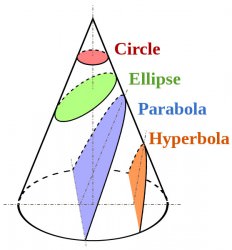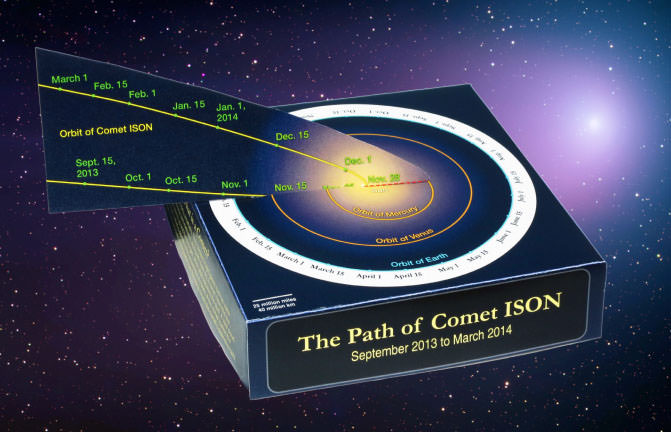Planet orbits are so easy to picture – eight nearly concentric hula hoops centered on the sun. Comets are weirder. Their orbits vary from tapered ellipses shaped like cigars to completely open-ended parabolas and even hyperbolas. Comet ISON’s highly-elongated (stretched out) orbit is best described as hyperbolic, although that’s subject to change if Jupiter gets into the act and gives the comet a gravitational nudge during its outbound journey. As the largest planet, it has a special knack for this kind of trick, having tamed many a wayward comet’s orbit into a neat ellipse.

Comets in hyperbolic and parabolic orbits are typically making their first trip to the sun from the bitterly cold and distant Oort Cloud, a roughly spherical volume of space beginning about 3,000 times Earth’s distance from the sun and extending outward to 50,000 times that distance or nearly one-quarter of the way to Alpha Centauri. The Cloud is believed to hold trillions of icy comets. Think of it as the sun’s ultimate beer cave.
To help visualize Comet ISON’s travels across the solar system we can always go the Internet and search for images and video, but sometimes it’s fun to use your own hands. Building a model using a simple cardboard template can make the knowledge “stick”. Not to mention it’s an excellent classroom activity for teachers preparing students for the comet’s post-perihelion display. All you need is this color pdf file, a printer and a few minutes to assemble.

Planets’ orbits are only slightly tilted to each other, but Oort Cloud comets drop in from any angle they choose. Gravitational interactions with passing stars and clouds of interstellar gas nudge them into the inner solar system, where they’re cooked by the sun into glowing and long tails composed of vaporizing ice and dust. Long ago, some passing star gave ISON a push. It’s been falling toward the sun ever since.
Animation of Comet ISON’s orbit created by NASA
While it may be tough to picture Comet ISON’s orbit slicing the planetary racetrack at a 62-degree angle, the paper model will give you an intuitive understanding of ISON’s path and comet orbits in general.
P.S. In case you’re a klutz with a scissors just click on the Youtube video above.


The only point of view missing was the one from earth… Oh well.
great time for our planet. hope we’re all safe, eye’s wide open